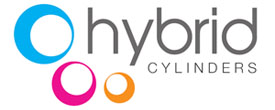Will REACH Chromium Regulations affect anilox roll manufacturing for Flexo Printing?
It is of no surprise to the audiences attending gravure focused meetings held by both the Gravure Association of the Americas and the European Rotogravure Association for the last few years that REACH Regulations in respect of chromium compounds present an uncertain future and whilst hexavalent chrome is the main focus of its efforts the belief is that other compounds such as chromium trioxide will see increased focus.
It will also come as no surprise to the same audiences that the Roto-Hybrid team have been developing a pioneering cylinder coating technology that is not only technically superior to chromium coatings with improved ink release properties, but that the Roto-Hybrid coating crucially in regard to REACH regulations, is a fully ‘green technology’ that cannot only replace chrome plating but also other electrolytic processes like copper or nickel plating.
So what about the Anilox rolls in the Flexo sector?
It is true to say that REACH will also affect the Flexo industry but the impact of the regulations are largely limited to chromium plating and at present, the most stringent regulations are directed towards hexavalent chromium used in the functional plating of both gravure cylinders and anilox rolls.
Whilst the Flexo industry does uses anilox rolls that are chromium plated, which will see increasing regulation towards what is widely thought to be an outright future ban, the chromium oxide ceramics (Cr2O3) widely used in anilox roll production do not use an electrolytic process but instead a plasma or thermal spray method to apply the coatings.
The industry standard chromium oxide coating, commonly referred to as ‘ceramic’ is a material that was chosen many years ago not just for its durability and abrasion resistance but also due to its ability to be laser engraved and the performance gains offered through laser engraved cells.
The benefits of chromium oxide ceramic anilox rolls over chrome plated rolls are widely known yet the cost of a ceramic anilox roll is significant by comparison.
Hexavalent Chromium (Chrome vi)
During the chrome plating process used for both anilox and gravure cylinders, vapours from chromic acid containing hexavalent chrome are released which REACH argue could expose workers to harmful levels of a known carcinogen and there are very stringent regulations to limit this exposure but that hexavalent chrome is also a ground water pollutant and there is significant toxic and hazardous waste involved in the plating process puts chrome plating at a disadvantage to thermal and plasma coating processes.
Whilst with the thermal spray application dust and fumes used in ceramic coating anilox rolls also can contain hexavalent chrome the thermal sprays are done inside noise abatement enclosures and all the dust/fumes are captured and exhausted through dust collectors.
A Chrome Free Solution
Just as with the gravure cylinder production the Roto-Hybrid Process can be applied to the manufacture of anilox rolls for the Flexo process, giving end user printers true flexibility in their preferred choice of printing process for any given job.
Whilst there are advantages and disadvantages to using chrome plated cylinders or anilox rolls compared with ceramic anilox rolls, the Roto-Hybrid Chrome replacement coating offers a truly ‘green’ process, entirely free from all REACH regulations and in doing so, removes the costs and headaches of continued compliance associated with chromium.
Aside from its green credentials the Roto-Hybrid coating performs better on press, has greater longevity and with a micro-hardness of 3000-3500 HV far surpassing the 1040HV of plated chrome and 1300 HV of most chrome oxide ceramic coatings. As such the chances of damaging the cells to both anilox and gravure cylinders (with a Roto-Hybrid coating) through usage or accident are all but eradicated, resulting in less down time, reduced need for spares fewer repairs and reduced need of the re-application of cylinder coatings.
Roto-Hybrid are currently performing technology trials with global leaders in flexible packaging and throughout 2018 will be releasing further details as we near launch for our novel chrome replacement technology.
To discuss conducting a technology trial of your own please feel free to get in touch and (register your interest here).
